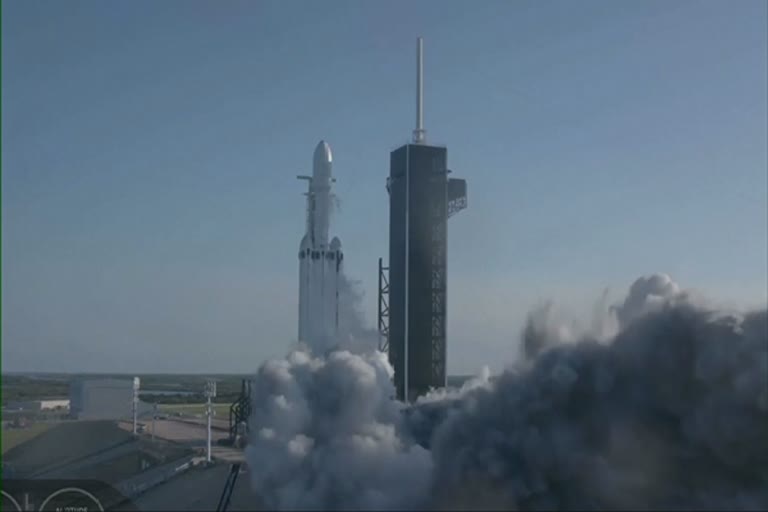Cape Canaveral, Florida: SpaceX launched its second supersized rocket and for the first time landed all three boosters on Thursday, a year after sending up a sports car on the initial test flight.
The new and improved Falcon Heavy thundered into the early evening sky with a communication satellite called Arabsat, the rocket's first paying customer.
The Falcon Heavy is the most powerful rocket in use today, with 27 engines firing at liftoff - nine per booster.
Eight minutes after liftoff, SpaceX landed two of the first-stage boosters back at Cape Canaveral, side by side, just like it did for the rocket's debut last year.
The core booster landed two minutes later on an ocean platform hundreds of miles (kilometres) offshore.
That was the only part of the first mission that missed.
The Falcon Heavy soared into space from NASA's Kennedy Space Center, using the same pad that shot Apollo astronauts to the moon a half-century ago and later space shuttle crews.
Nearby beaches and other prime viewing spots were packed with tourists and locals eager to catch not just the launch but the rare and dramatic return of twin boosters, accompanied by sonic booms.
The roads were also jammed for Wednesday night's launch attempt, which was scuttled by high wind.
Because this was an upgraded version of the rocket with unproven changes, SpaceX chief Elon Musk cautioned in advance things might go wrong.
But everything went exceedingly well and the satellite ended up in the proper orbit.
Musk put his own Tesla convertible on last year's demo.
Also Read: Trade talks with US are 'moving forward': China
The red Roadster - with a mannequin, dubbed Starman, likely still at the wheel - remains in a solar orbit stretching just past Mars.
SpaceX plans to launch its next Falcon Heavy later this year on a mission for the US Air Force.
The boosters for that flight may be recycled from this one.



